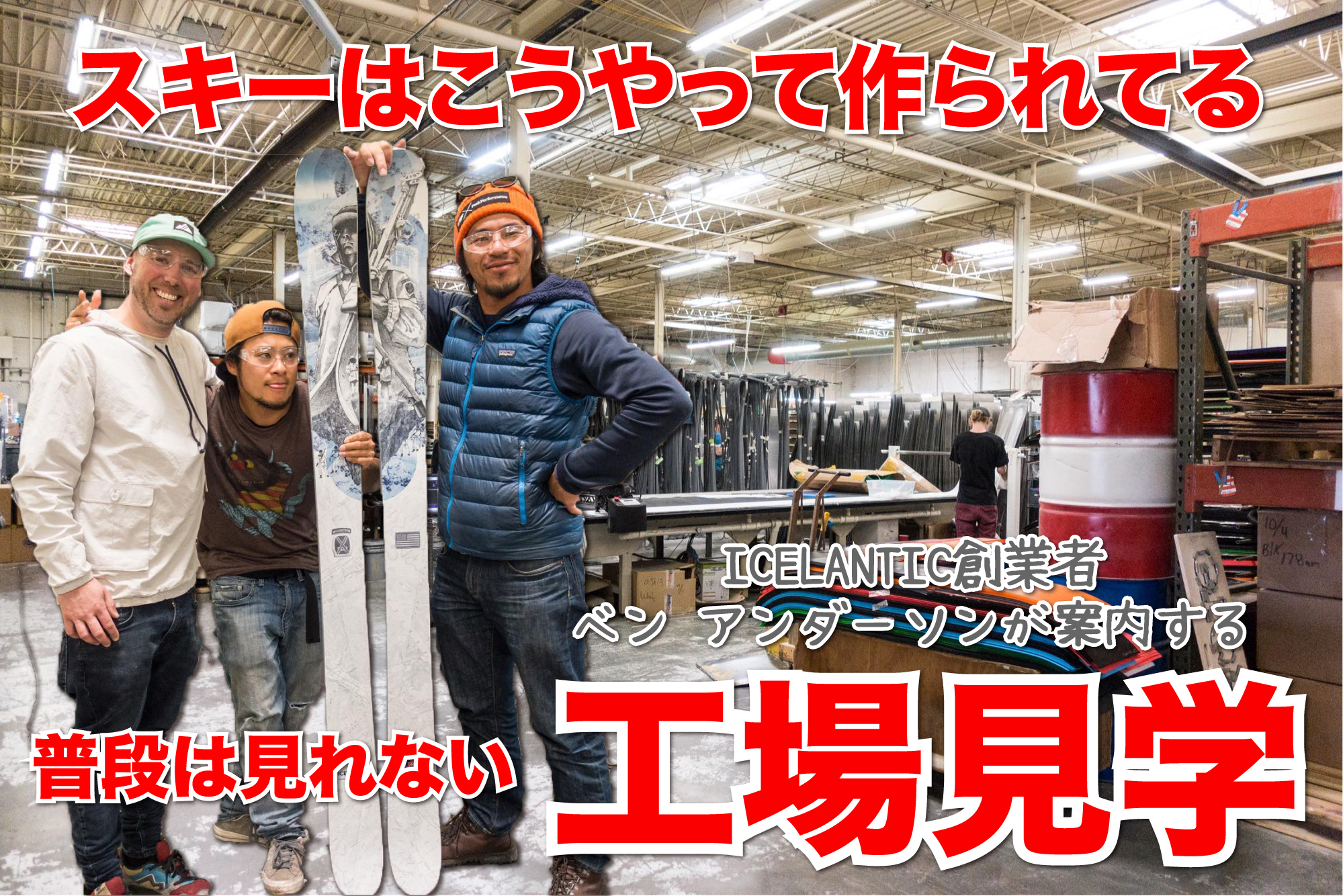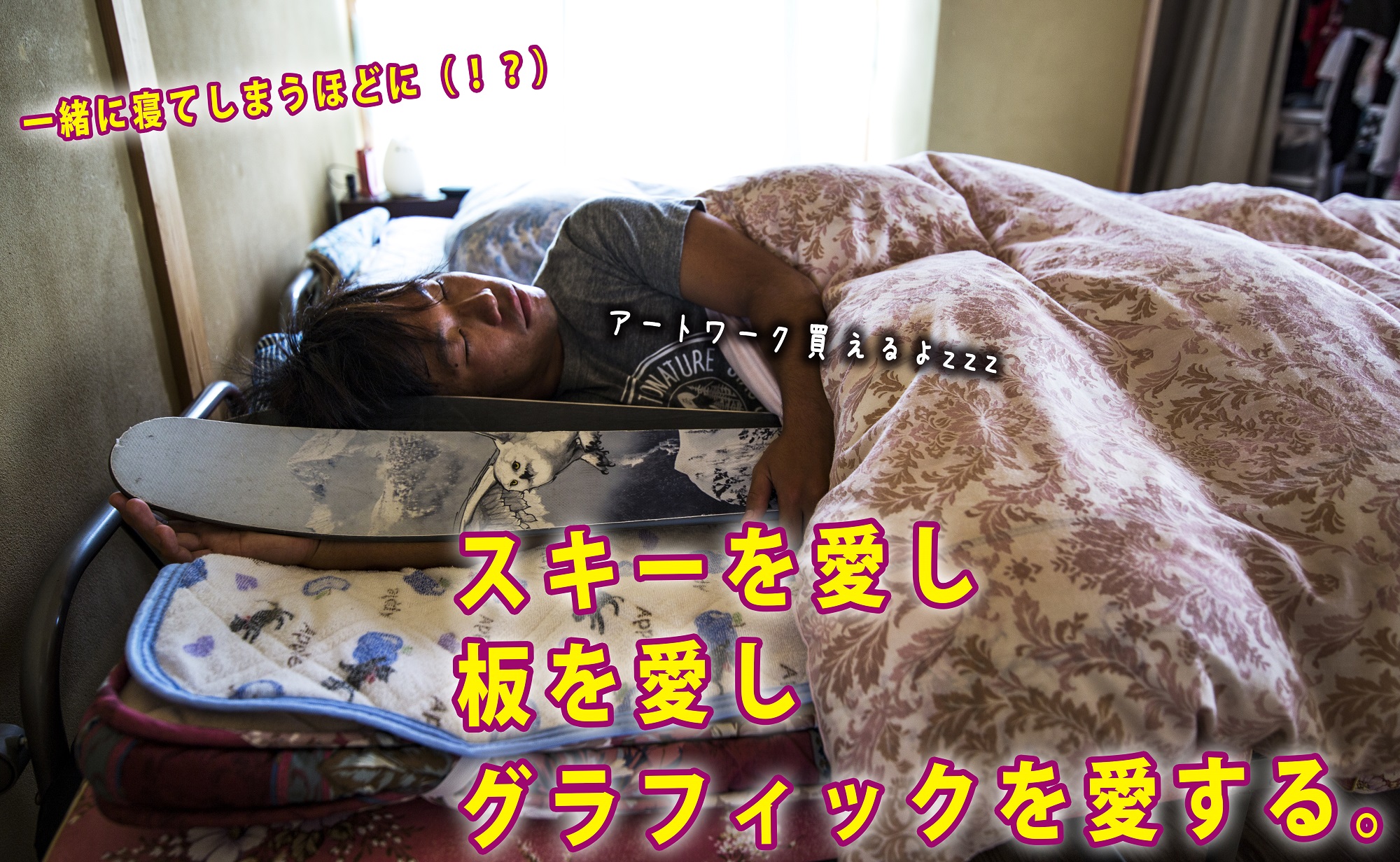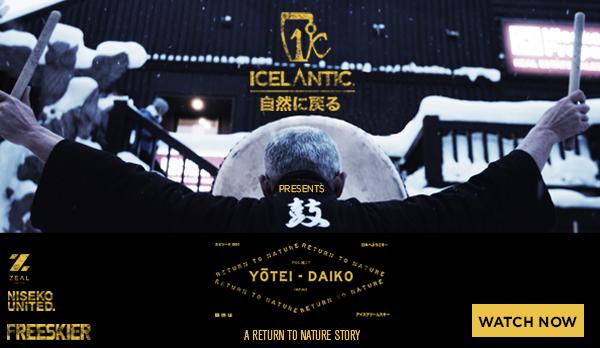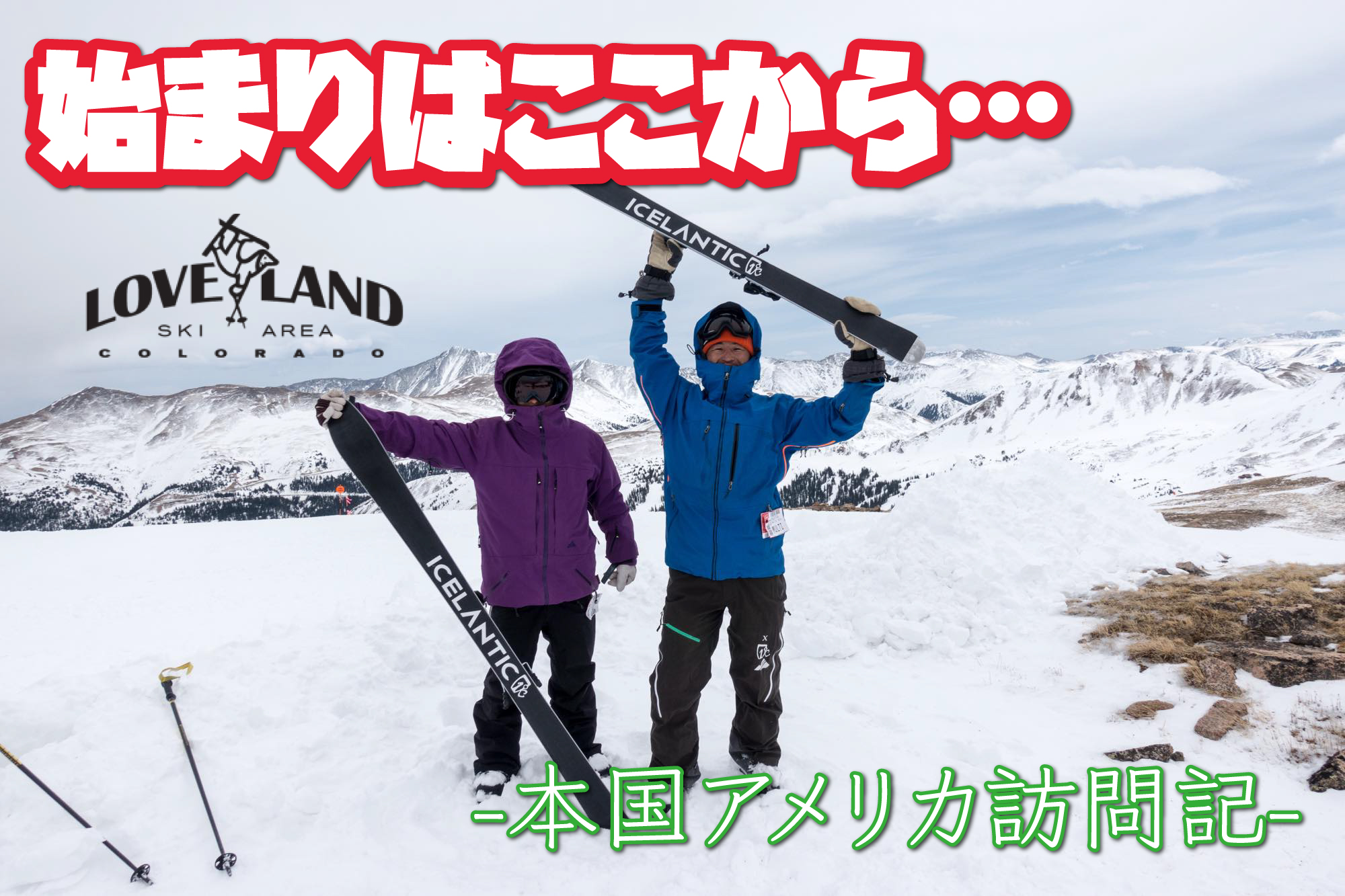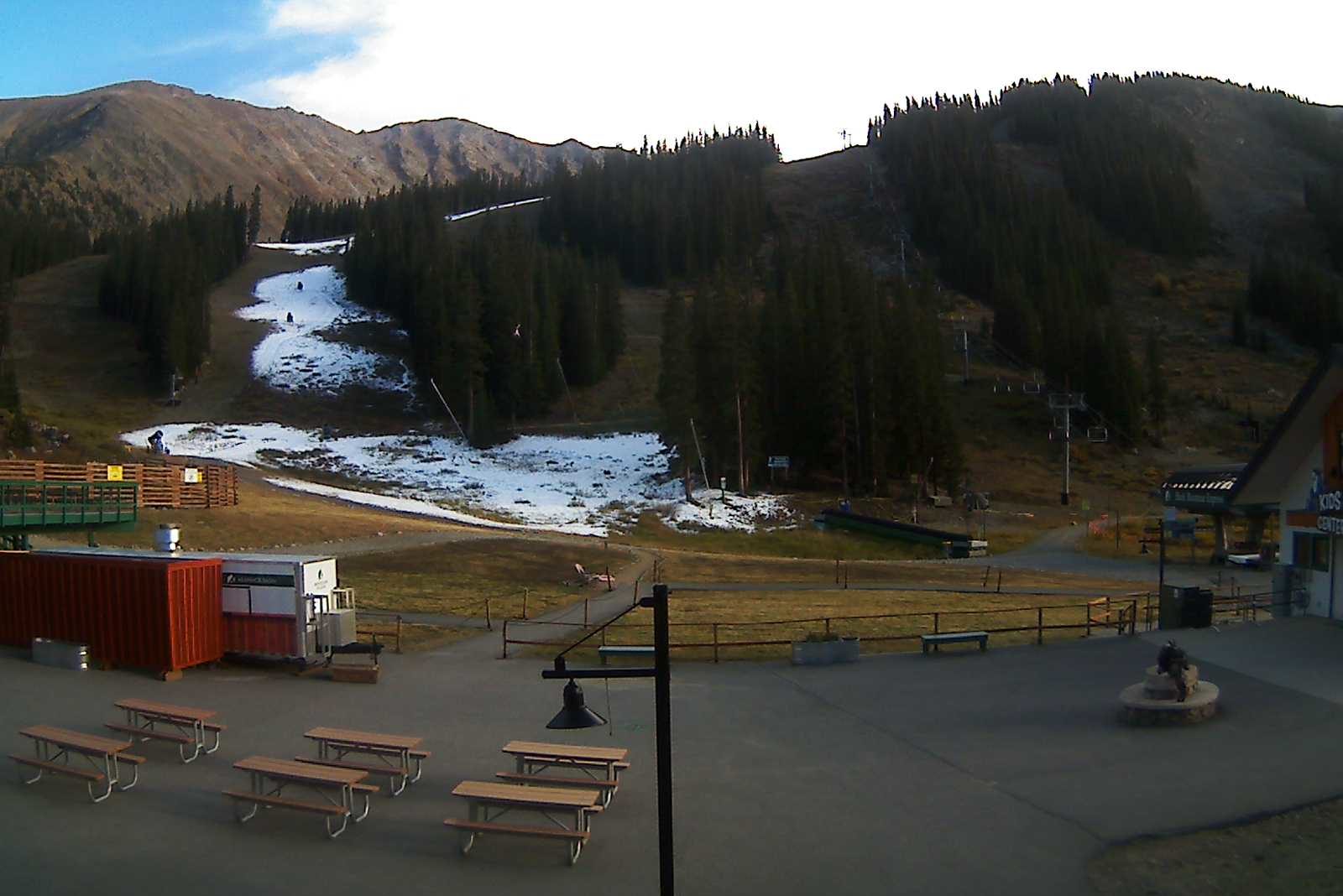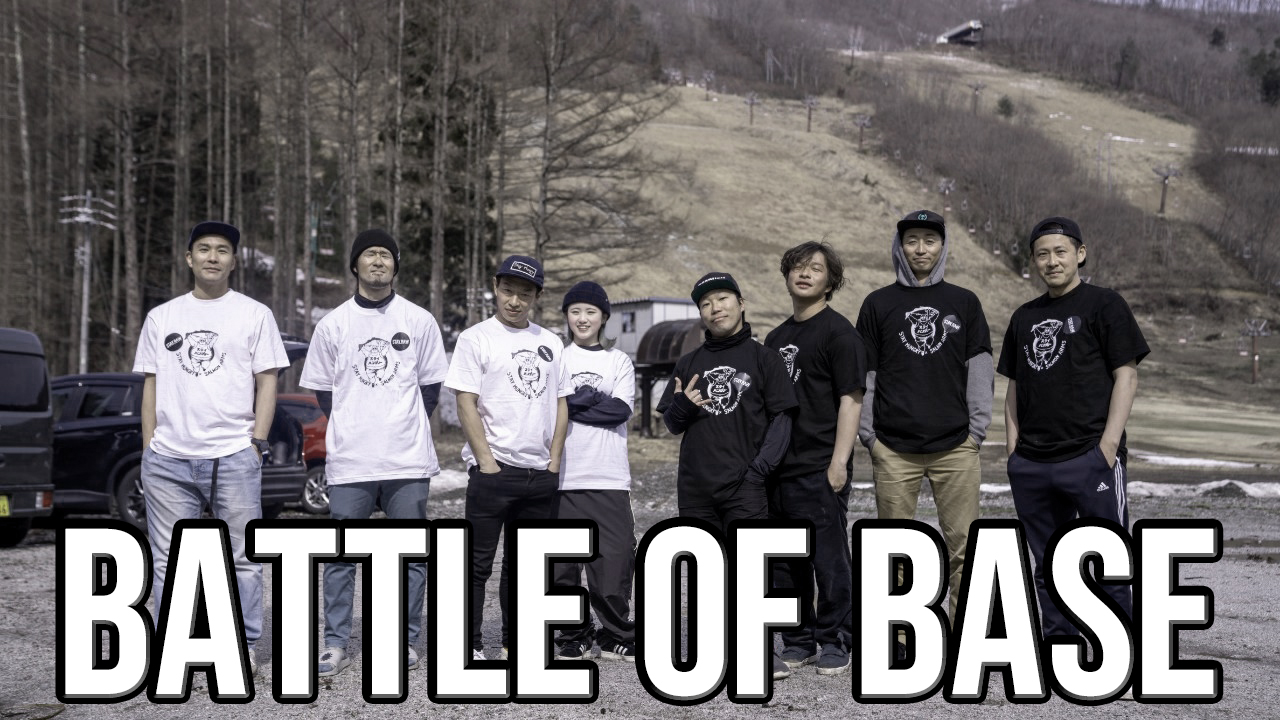USA チームも全員がシェアしていた、ある記事
先シーズン真っ只中に、一斉にアメリカ側の幹部達がシェアしていたある記事がありました。↓↓↓
https://www.theepochtimes.com/the-ski-company-doing-everything-different-to-make-everything-right_2704704.html
EPOCH TIMES (大紀元)のインターネット媒体に掲載された記事でした。 おそらく大紀元と聞いて、ピンとくる人は結構いると思います。 ・・・スキーとかほぼ関係ないじゃんと思うかもしれませんが、これは一つの快挙で、「スキーメーカー」として取材されるのはICELANTIC がここ最近では初だということ。 さらには、ICELANTICのルーツが事細かに記載されていて、全くスキーに興味がない人も、読んでいて別のインスピレーションを感じられるというものです。
率直に、とてもいい記事だと、思いました。 Icelanticという小説を読んでるみたいだった。
J.H.ホワイト氏、NYに住むアート、メンズファッション、カルチャーを専門にするジャーナリストのインタビュー取材記録です。 下記にこの記事についてわかりやすく何をいってるのか翻訳してみたいと思います。
英語のアーティクル・記事って、何かとこうポエムっぽいってうか、日本語に訳すと、クサイ・キザ感があって翻訳するのが結構むずかしいんですよ。よく、映画の吹き替えにちょっとした違和感を覚えたことないですか? 実際映画で見ていると、自然なんだけど、じゃあ普通に日常生活でああいう言い回しは演者でもない限りしないですからね。
なので今回の翻訳・和訳はちょっとストーリーテラー風になってしまいますが、小説を読んでいる感覚で読んでみてください。
英語を勉強している人にも、かなり難易度の高い英語の言い回しがふんだんに使われているいい記事だと思うので、TOEICとかのREADINGの練習にもなるかも。
それでは、はじまりはじまり〜
「原文は一番下にまとめてあるので英語で楽しみたい方はそちらをご覧ください」
奇想天外なスキーメーカー
昨シーズンの冬、私は取り憑かれたかのようにスキーにハマった。実に25年ぶりに板を履いた。
クリスマスをまたいで、何本滑ったが物足りなさを感じ、いっそのことコロラドへ行って全力でスキーを楽しもうと思いすぐに航空券を手配した。四月末から五月中旬まで、19回もアラパホーベイスンにて滑走した…人生で一番滑走日数が多い年になった。
私は今回のスキートリップで二つの素敵な経験をした。
まず一つは、山は本当にマジカルだということが理解できた。私は長年、コート上のスポーツや野外フィールドを中心としたスポーツを続けていた。だが、大自然が舞台のスキーというスポーツは、それとは比較にならないくらい広大で、そして何より自由だとういうことに気がついた。
そして、そこにあるコミュニティーにも少しだが、根付くことができた。素敵な出会いだった。
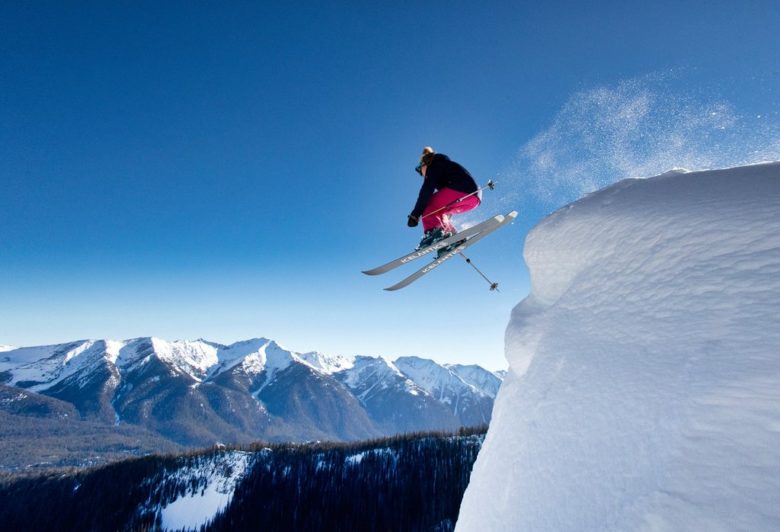
Icelantic professional athlete Amy David. Photo by: Hillary Mayberry
次々と広がるアイデア
私は、Arapahoe Basin Ski Area、(通称A-Basin)で数ある初級コースを何本か滑走したあとプロショップに寄った。新しいスキーが欲しくてたまらなかったのだ。
店に入り、店員にアドバイスを求めた。
「初級者にも扱いやすく、柔らかめで・・・でも、上手くなった時もずっと付き合えるスキーが欲しい」
私はこの質問の後半部分を強調した。
初級者にも関わらず、私は上級者モデルに目を向けていた。
なぜならスキーは生涯楽しめるスポーツだからだ。できれば長く付き合いたい。
「僕、結構ハードスキーヤーだよ。任せてよ。」
と、マシュー(店員さん)は言った。
明らかに滑り込んでるであろう、顔の日焼け。いかにもと言わんばかりのスキーテストバッジの数。
私は彼を信じた。
彼は、カタログを取り出し、一番のお気に入りであると言うスキーを紹介してくれた。
「Nomad 105」と言う名の、Icelanticというメーカーが作っているスキーらしい。
ビビッっときた。
モデル名が「NOMAD」・・・合いすぎにも程が有る。
昨夜、私はウォールマートの駐車場で車泊した。もうすでにノマドに影響されていたのではないのか。
そして何よりグラフィックの美しさが目を引いた。もはやこれはアート作品だ。
ペンシルタッチで描かれた大海原を渡る船、そして舞台は山(17/18モデルを紹介されたみたい)。このカルト的な人気を得ているローカルカンパニーについてもっと知りたくなった。すぐさまCEOに連絡した。
夢ではなくなった
Icelantic Skis の発案者は Ben Anderson(ベン・アンダーソン氏), アクションスポーツ界のマッドサイエンティスト的な人物だ。(バックトゥザフューチャーのイカれた博士みたいな感じ)
ウェブサイトで紹介されている、スキーを爆破させる動画には驚いた。言うまでもなく、スキーも、もちろんBen本人も無事なわけだが、いずれにせよ「Bombproof」、頑丈さでは負けないぞ、ということをアピールするにはとんでもない発想だ。
「Benは今まで私の出会った人の中で間違いなく、もっとも多作なクリエーターよ」
と、CEOのAnnelise Loevlie。
「彼はヤバイわよ(いい意味で)。すごいアイデアマンで、そのアイデアが形になっていくスピード、スムーズさには目を見張るものがあるわ。」
と、続けた。
数ある優良企業と同じように、Icelanticもシンプルなアイデアからうまれた。
アンダーソンは当時のスキーマーケットに対して不満を持っていた。もっと太くて、短めで、プレイフルで・・・そんな自由な板があってもいいと思っていた。だから、明確なビジョンを持っていた。
「ないなら作ってしまえば良い」と。
アンダーソンは16歳でボルダーにあるスキー板工場でインターン生として働き始めた。そこで板作りの基本、アートワークの重要性を学んだ。そこから数年、専門学校にてインダストリアルデザインを学んだ。しかし彼は中退しバイトで稼いだお金で、19歳でプレス機を購入し、エバーグリーンにある実家のガレージでスキーを作り始めてしまったのだ。
そしてすぐさま、10歳のころから付き合いのある親友3人に電話をかけた。
まずはロゴが必要だった。スキー業界を半世紀に渡り牛耳っているメーカーに対抗するためにインパクトのあるロゴがまずは必要だった。
彼のファーストコールはアーティスト・共同創立者でもあるTravis Parrへだった。
「パーはとても物事を深く考えるアーティストなの。」
と、CEOのAnnalise。
「私達のスキーに刻まれているグラフィックは全て、彼が何度も何度もアイデアを重ねて作り上げたものなの。だから、全て自信作。」
と、続けた。
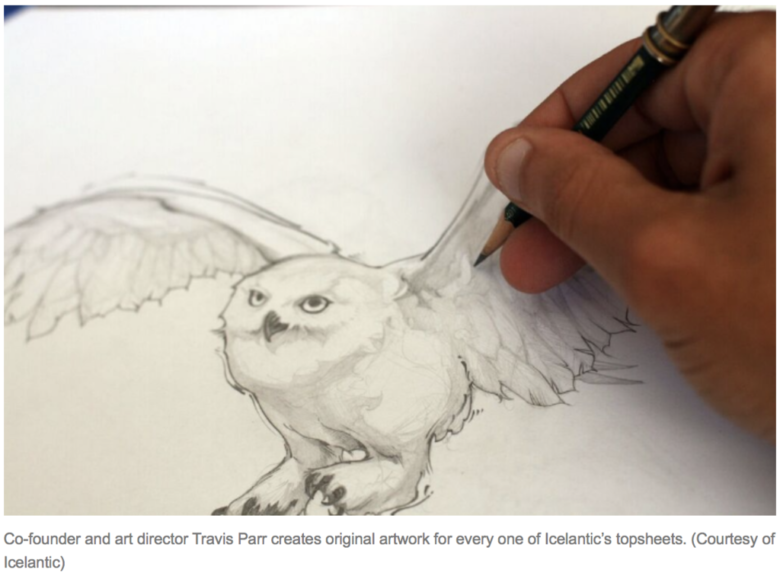
IcelanticのウェブサイトにはParrからの引用文がある:
「人類とその置かれている環境は切っても切れない縁がある。私は目に見えないエネルギーの”色”を感じそれをそのままキャンバスに描く。そこから見えてきたアートワークが、スキーに刻まれライダーの能力や感情を上手く引き出せるように・・・ちょっとした”グラフィック”が手助けになることを期待している。ふと板を見たときに、勇気をもらえるように、冒険がさらに楽しくなるように・・・」
Icelanticのロゴである1℃ (One Degree Celcius) についても語ってくれた。
「この温度は水の分子が固体状に変化する温度なの。そう、雪に変わる温度。私たちにとって”変化”を指す温度であって、大自然の触媒反応を一番自然な形で目の当たりにできる・・・」
と、Annelise が続けた。
IcelanticのすべてのグラフィックをTravis Parrが自ら手がけている。この特徴的なグラフィックは業界内でも一目見ればIcelanticだとすぐにわかる。
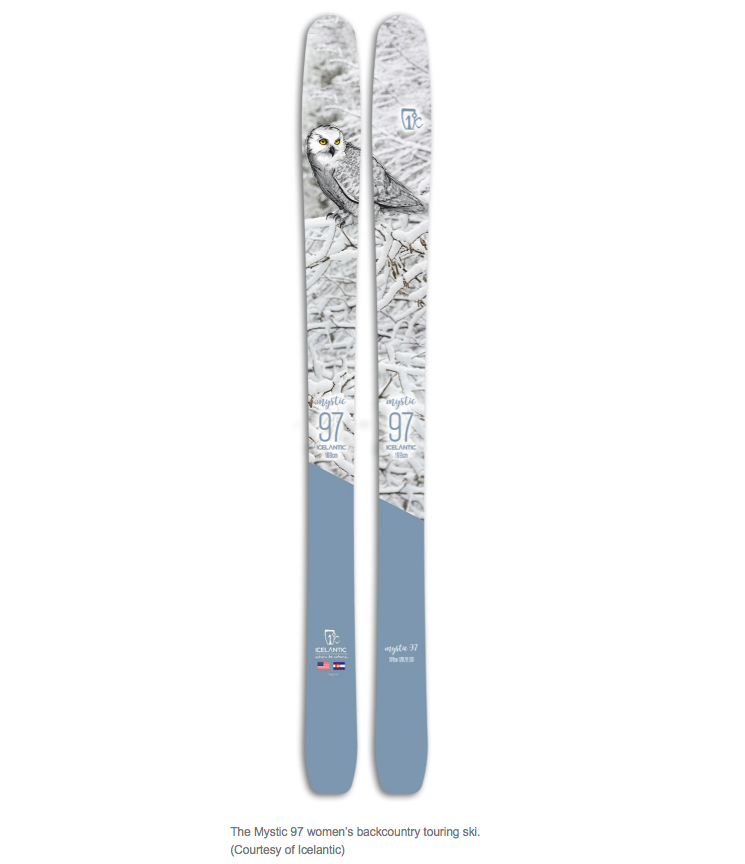
「単に自分たちが美しいと思っているデザインをそのままスキーへプリントしてしまうのは正直リスキーだと思ったわ。そんなの自己満だもの。100人が100人、それを「美しい」と思う訳ではないわ。でも見て感じて・・・それをちゃんと感じれる人ならきっとわかってくれると思ったの・・・素敵なものを見た時って誰だって嬉しい気持ちになるでしょ?」
と、Anneliseは満足そうに言った。
確かにそうだった。板に描かれているペンシルタッチのあの船の絵。筆みたいなタッチでダイナミックに描かれた大海原。まるで、「一緒に冒険に出ようよ」とスキー本体から手招きされている様な感覚に陥っていたことに気付かされた。私はIcelanticに惚れたいたことに、その時初めて気づいた。
ロゴの件について一件落着した後、すぐにアンダーソンは残りの2人に電話をかけた:
Travis Cook氏、エンジニアリングと建築を学んでいる友人だった。本格的な板造りには絶対必要な人間だ。彼から板の接着構造や設計のアドバイスをもらっている。
そして最後の一人は当時Vermont州で経済ビジネスを専攻していた、Annelise Loevlieのために席を空けてあった。将来の会社のキャプテンの席が用意されていた。現在の彼女のemail 署名は「C.E.Ohhhhh」。正真正銘、Icelanticの現職CEOだが、気取らないスタイルがまたいい。
この4人の近い仲間達が、スキーメーカーでは前代未聞のことに挑戦し続け、今現在に至る。
まず始めに自分たちのスキーを大量にプレスしてくれる工場が必要だった。
何と、スノーボードを作っている工場に問い合わせた。
「スノーボードメーカーがスキーを作るって??正直、とんでもなくバカげたアイデアだと思ったわ。」
と、Anneliseは笑いながら言った。
あの時を知っている人は知っていると思うが、当時はスキーヤーとスノーボーダーは「仲が悪い」ことは誰もが知っていた。ボーダーは煙たがられてたのだ。
しかし、そのスノーボードメーカーはただのメーカーではなかった・・・特に地元ではレジェンド的なメーカーだったのだ。
「私たちはみんなNever Summer Snowboardsに乗って育ったわ。なんせ、地元がここだからね。Never Summer でライディングするってすごくイケてることだったから。」
と、当時を思い出しながらAnneliseは言った。
「Never Summer のファクトリーで私達のスキーを作ってくれるなんて、夢のまた夢だと思ってた。」
と、続けた。
確かに、ボードメーカーがスキーを作る発想自体が型破りで、Never Summer で自分たちのスキーが作られているとなった場合すぐに無敵状態になることは間違いなかった。ましてや、スノーボード業界で25年もの間、屈指の頑丈さを誇っているNever Summer をパートナーシップを組むことは必然だった。
もちろん、クオリティ面やコスト面を考えれば、東ヨーロッパや中国の工場に依頼する方が安く済む。この2拠点は全世界の95%のスキー・スノーボードを製造しているのだから。数が多いからある意味、安心で低コストだ。
がしかし、こだわってこだわり抜いたデザイン、設計だ。Icelanticにはその努力価値に値する工場が必要だ。
スタートアップから4年が経過し、最終的にNever Summer とのパートナーシップ契約に結びついた。
新たなMade In The USAの伝説が幕を開けたのだった。
「巨大な工場は50%は手作業、50%が機械」
と、Annaliseは説明する。
「私達工場では100%ハンドメイド、最後のフィニッシングまで手作業。一種のクラフトアートなの。プレスから出てきた板は手作業で型から外され、鋸でハンドカット。何回見ても飽きない・・・本当アート作品だわ!」
と、自慢気に続けた。
Never Summer Factory はIcelantic のヘッドオフィスから車で約10分の郊外にあり、そこではクオリティーコントロール、プロトタイプデザイン・成型、そしてエンジニアリング;スキー制作に関わることすべてが行われている。
「ヘッドオフィスから工場まで近いから、私達幹部と職人達の距離が非常に近く、会いに行くたびハイタッチで一日が始まるくらい仲が良いのよ!」
と、Annelise は誇らし気に語った。
工場や機械の状態、職人達の体調などすぐに相談・報告ができて、そしてデンバー経済に貢献することがとても重要だと、語っていた。もし工場や職人達が国内になかったらそれは容易ではないのは言うまでもない。
「フィールドがすぐそこにあるからこそ、Icelanticは「地域貢献」に力を注げる。製造って実はめちゃアナログチックだと思うの。泥臭いけど、楽しいのよ。」
とAnneliseはMade In The USAになぜここまでこだわりを持っているのか説明してくれた。
※我々Japan Team も去年この工場に訪問したが、本当にみんな仲が良く、歓迎体制が素晴らしかった。そして本当に一本一本手作業で行われていた。あたらためて思うと、その背景にはこのような企業努力とこだわりがあったから今、このような非常に良い職場環境なんだと思う。
Icelantic はただの「流行りの板」ではないのだ。新たな品質という「基準」を作ってしまった。多くのメーカーは一年保障なのに対して、Icealnticは公式的に三年保証を謳っている。しかし、これは非公式ではあるが本当は「生涯保障」ということになっている。つまり、一生だ。
「基本的にはすべて保障しちゃうわ。私たちが作っているスキーは本当に頑丈。スキーは生涯スポーツだしずっと使って欲しい。満足してスキー人生を終えたら壁に飾っても良いし、それで椅子でも作ってくれても良いわ。」
と、Anneliseは説明する。
現役ライダーのMatthew Ortisiは、Icelanticの哲学や品質に対してこう語ってくれた。
「Icelanticで一番気に入っているところは、板ももちろんそうだがその背景だよ。ローカルメイド、デンバー生まれ、でハンドメイドということ。僕も工場に足を運んだんだ。やっぱりライダーとして自分の相棒がどうやって作られているか気になるからね。そこでは一つの愛が溢れるファミリーがあったんだ。自分の仕事にプライドを持っていて、僕自身もライダーとしてのプライドも以前よりしっかり持てるようになった。誰がどこで作っているかしっかり確認できることは、すごく大切だよ。信憑性が違うよね。安心だよ。」
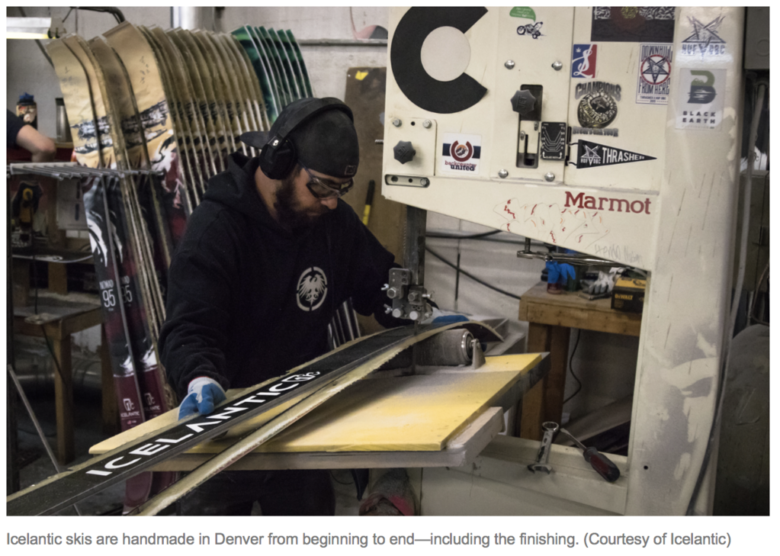
先行くアイデア
Icelantic Skis はここ12年に渡って世界中のスキーヤーを笑顔にしてきた。だが、たった4年前までは経営面で相当苦しんでいたとAnneliseは語る。
「経営が危機的状況に陥っていた。本当にお金がなかったわ。楽しいことを考えるのはもちろん、チャンスを逃さないように投資することも大事なのはわかっていたわ。」
赤字経営から抜け出さないといけない時期がやってきた。
会社とプレイヤー達はは自己反省、内部整理に時間を作った。
「あまりにいろんなことを手広くやり過ぎていたの。事業の縮小を中心にみんなで考えたわ。」
と、彼女は言う。
みんなお互いに確認し合った。
「Icelanticの目的は?」「どこへ向かっているの?」
答えは内部・外部どちらにも合った。
「最大のターニングポイントは、“Return To Nature”がメインコンセプトになったときだったわ。」
と、Anneliseは真剣な眼差しで答えた。
「Return To Natureは私達の真言であり、みんなが共有できることだと思ったの。カスタマーにももちろん、私達人類全員に共通すること。真の自分と、素の自分と向き合って欲しかった。」
私は、ユーザーとして、そしてまだ初心者だがこのスローガンには心を打たれた。このスローガンはダイレクトに伝わってきた。私は記者として20年間もの間たくさんのところを訪れ、取材している。だが、初心に戻ることを大切さをこのフレーズは教えてくれた。アウトドアの力はすごい。
「Icelanticの一つのカルチャーなのよね。外に出てみようよ、自然と遊んでみようよ;日々の仕事よりも、セルフケアのほうが私達は大切だと思っている。自然は私達の師匠、そして最高の癒しの先生だと思ってる。」
と、Anneliseは自然に対する想いを語ってくれた。
彼女は最近友人とクライミングに出かけたそう、長年やっていなかったとこのだった。
「最近、仕事に熱中しすぎてひきこもりがちだったの。でも、クライミングに久々に出かけて、再認識できたわ。あの感覚。私にはできる。あらゆるものに対する余裕があるということ、そして成就していることに気づいた。
チャレンジングなことに挑戦するってすごく精神にも良いし、自然と一体に成ることってとても良いリマンダーになるの。ソファにただ座って、何にもしない。瞑想する。それでもいいのよ。」
と、彼女なりの哲学を教えてくれた。
自然から学んだことはCEOである彼女のリアルライフに大きく影響していることがわかる。
「自然のサイクルと張り合ったり、見習うことは良い習慣よ。」
と、Anneliseは続けた。
彼女はリーターシップは「水」みたいなものだと例えた。
「水はやわらかくて、でも強くて重い。順応性があり、壊れない。なおかつ静粛で、流れたり、止まって溜まったり。湖にように静かな時もあれば、波のようにうねってパワフルになることも。」
と、独特な表現で説明してくれた。
「ビジネスにもっと人間味を出すことに私は力を入れている。意識の高い会社にトレンドが向いていると強く思うわ・・・消費者は明らかに以前より意識が高くなっていると感じる。どこで製造されているか、どういったところで作られているか、どういう会社が作っているのか・・・」
と、続けた。
Return To Natureという合言葉はIcelanticをプロフェッショナル面でもパーソナル面でも大きく成長させた。
現在は経営面でも精神面でも全て「健康的な」会社になった。ポジティブなサイクルになった。
例えば、メンズモデルにパイを大きく置いていたスキー業界だが、初めて「レディース バックカントリーツアラーモデルのMystic」を作り上げた。
「今期は私もボーイズ達と一緒にオフピステデビューね!」
と、嬉しげに語ってくれた。
Natural と Mysticのアートワークは非常に美しい。白梟の知的なグラフィック、私のコレクションに入れたいくらいだ。購入したNomad 105ももちろんだが、魅力的なスキーがたくさんある。
私は、再度ライダーのOrtisiにA-BASINで出くわした。ちょっとは上手くなったと勝手に思っている私だが、調子に乗って一緒にモーグルコースを滑ってみた。リフトは会話が自然と弾む。彼はいかにもアイスランティックのライダーらしいことを言っていた。
「山にいる時はいつも、この板のクリエイターを一番近く感じるんだよ。僕のメーカー、そして全世界とも繋がる感じがする。自然を感じたいのなら、自分が自然の一部なんだと思わなきゃね。」
「スキーって、完全にマスターするってできないと思うんだよね。完璧って形はないよね。毎回違うラインだし、コンディションも違うし、新しいことを覚えて、学ぶ。そして、毎回「ビビれる」。たまらないよ、あの感覚。行けるかな?飛べるかな?それがないと、成功した時の嬉しさは感じれないからさ。」
と、彼は嬉しそうに語ってくれた。
何本かコースを回して、私が呼吸を整えている中、彼はちょっと上にある崖の上に登っていった。
滑り出した。
私の頭上をバックフリップしながら見えたICELACTICと刻まれたソールがキラッと見えた。
・・・まぁ、私にだっていつかあれくらいはできるだろう。
いや、できるに決まっている。なんだってできるんだ。
そう自信を持たせてくれる、そんなスキーメーカーだ。

Icelantic Ski athlete Matthew Ortisi says, “When I am on the mountain, that’s when I feel closest to my creator, my maker, the universe.” (Courtesy of Icelantic)
記事:JH White
翻訳:Yu Arai
Icelantic Japan
この記事を翻訳してみて僕も気づいたことがある。
ほとんどのメーカー本社は東京や横浜に拠点を置いている。基本輸入業をしているなら、港が近かったり国際空港が近い方が便利に決まっている。
色々な手続きが都会にいた方がスムーズだ。
が、しかしあえてIcelantic Japanは本社を長野県に置くことにした。理由は単純。
僕らが扱っているものは山で使うものだから、その使用するフィールドが近い方が単に自分たちも使用できて、ユーザーのみんなに率直な意見を伝えられるからだ。
僕らチームはスキーだけではなく年間を通してアウトドアスポーツを楽しんでいる。
マネージメントチームはトレランやパラグライダー。SUPやカヤック。ライダーたちもみんなサマースポーツも全力で楽しんでいる。僕らもそういう人間だった。自然が大好きな人たちなのだ。
今年の2月、創立者であるBEN ANDERSONが来日した。
彼も真の旅好き。これからのビジョンやコンセプト、色々なことを話した。彼は常に前向きだ。
以前アメリカに行って、僕らがIcelanticの正規輸入代理店なるにあたって一つだけ、BENから約束してくれと言われたことがあった。
「Icelanticのコンセプトを全力で好きになって、日本にもReturn To Natureの素晴らしさをどんどん発信してほしい。」
と。
これからもみんな、外へ出て感じてみてほしい。
身軽でいい。全力で遊んでほしい。自分も自然の一部だと、再確認してほしい。
【記事の原文】
The Ski Company Doing Everything Different to Make Everything Right
The American-made skis inspiring a lifestyle deeper than Colorado powder
Last winter, after having not skied for 25 years, I caught the ski bug. I skied once over Christmas, and after a few more runs, wasn’t ready for the season to be done. So, I flew across the country where it wasn’t—Colorado. From late April through May, I skied 19 times at Arapahoe Basin—more times than my entire life combined, by far. I had two big takeaways from my champagne powder holiday. For one, the mountain has magic. I grew up playing competitive athletics on a court and on a field, but, decades later, I’ve come to realize, nothing compares to adventure sports outside in the wild. Secondly, I came across a company, and community, that’s as inspirational as the mountains themselves.
All Aboard!
I meandered into A-Basin’s pro shop after a typical shaky few runs down Molly Hogan—the bunny slope—and Wrangler—the easiest green. I started chatting with a guy working inside about what I was looking for—some skis that were soft enough for a beginner but that had some range that I could grow into. I emphasized the latter part, since I had made up my mind that I was going to buy an advanced ski despite my novice status. “I ski really hard,” said Matthew Ortisi, the person helping me. I believed him. He had a fresh rope burn across his face, a badge of authenticity earned practicing tricks in the park. He opened a catalog and showed me his favorite skis. “Nomad 105,” he said of Icelantic Ski’s most popular freeride model at 105-mm width. I was in awe. To start, the name “Nomad” was just too fitting. The night before, I had slept in a car in a Walmart parking lot near the mountain like a proper enthusiast. I too was a nomad. Secondly, the skis were a thing of beauty, like pieces of art. The topsheet design was a regal ship powering its way across uncharted seas, and mountains. I had to learn more about Icelantic Skis, this local company with a cult following. I started doing research, and the more I learned, the more I loved. So I called up the CEO.
Pipe Dreams
Icelantic was the brainchild of Ben Anderson, a sort of mad scientist of action sports. There’s a video of him trying to blow up a pair of Icelantic skis on the homepage of the company’s website. Both the skis, and Anderson, survived by the way, crystalizing Icelantic’s claim that its skis are, in fact, “bombproof.” “Ben is literally the most prolific creator I have ever met,” says Icelantic’s CEO Annelise Loevlie. “It’s insane. He has an idea, [and] you’ll never see a creative process happen as quickly or as smoothly. It’s something to witness.” Like all great companies, Icelantic started simply as an idea. Anderson was dissatisfied with what was available on the market, wanting something shorter, fatter, more playful. Like all great visionaries, Anderson believed the solution was to make one himself. So, at age 16, he started learning the art of ski-making at an internship in Boulder. Anderson continued on to study industrial design for a year and a half in college, before dropping out and committing to his obsession—making skis at the standard of durability, and fun, that he wanted. At 19, he bought a press and started making skis out of his parents’ garage in Evergreen. He then picked up the phone and called three close friends he had known since he was 10. Anderson needed a logo for this bootstrapped ski company to rival the deep-pocketed incumbents who had owned the market for the last half-century. His first call was to artist, and co-founder, Travis Parr. “Parr is such a deep, deep, thoughtful artist,” Loevlie says. “Every graphic we have is 10 layers of intention and reasons why we chose it.”
Icelantic’s website has a quote from Parr: “Humans and their environment are irrevocably interconnected. I begin by using texture and color to hint at the invisible, emotional energy on the canvas. Then the human subject evolves, capturing and reacting to that energy and emotion, providing a glimpse of the complex and broad spectrum of self.” Parr’s starting point, this symbiotic interplay of man and nature, illustrates the ingenuity of the logo he conceived for Icelantic: One Degree Celsius. It’s the temperature at which water molecules begin to transform into their solid state, snow. “To us, it represents the temperature of change, a catalytic moment—that one degree separation from transformation,” Loevlie says. “There’s that story of a person digging for a gold mine, and they dig for years and years and years. They give up, but little do they know, they are one pickaxe throw away from the gold.” Parr also hand draws all of the topsheet art for the skis. His artwork is one of the signature traits of Icelantic, whose competitors use safe, consumer-tested digitally-generated graphics.
“It’s risky to put what we think is beautiful art on skis, but for those who see it and feel it … when you see something that’s beautiful, it makes you happy,” Loevlie says. That was my experience. It was Parr’s nomadic ship on the 105s that first caught my eye, beckoning me to take a voyage with them. Once the logo was solidified, Anderson called on two more childhood friends: Travis Cook, who was studying architecture and engineering, who would work closely with Anderson to craft a legitimate ski that would hold together and perform well. The final role was reserved for a friend studying business across the country in Vermont—Loevlie, the company’s future captain, or “C.E.Ohhhhh,” as her email signature reads. The close team of four friends then decided to do something entirely forbidden by any reputable ski-maker—they sought manufacturing from a company that makes … snowboards. “The idea of a snowboard company making skis was ludicrous,” Loevlie says, highlighting the well-known rift between skiers and snowboarders. But this wasn’t just any snowboard manufacturer—it was a legendary one.
“We all grew up riding Never Summer snowboards, because we all grew up here, and Never Summer was the coolest thing to us,” she says. “It was always pipe-dreamy for us to have our skis made at Never Summer.” But pipedreams born on the half-pipe have a certain daring, invincibility to them. Never Summer was the clear choice to make the world’s most indestructible skis because they had been making the world’s most durable snowboards for the last 25 years. Of course, the cheaper route—both in cost and quality—would have been to outsource to larger factories in Eastern Europe and China, the two places where 95 percent of skis and snowboards are manufactured. But at the core of Icelantic is the union of art and artisanship. To give Icelantic’s topsheets a worthy vessel, the skis’ craftsmanship would need to be up to par. So after four years of working with other independent manufacturers, Icelantic finally sold Never Summer on a partnership, and a new legend was born.
“In bigger factories, it’s 50 percent hands-on, and 50 percent machine,” Loevlie says. “In our factory, it’s 100 percent handmade, even the finishing is done by hand. It’s a craft. When the skis come out of the press, they hand cut with a jigsaw every single ski out of its mold. It’s insane to watch—it’s really an art.” With the Never Summer factory only 10 minutes from the Icelantic head office, there’s also unparalleled quality control, prototyping, and engineering that can be worked on daily together. It’s also about being “able to high-five the people that are actually making our skis, and have a relationship with them,” Loevlie says. Knowing the conditions of the factory and the workers, as well as boosting the local Denver economy, are all essential for Icelantic, and would be missing if the skis were made abroad. “Manufacturing is such an old-school idea,” she says. “It’s cool to fan the fire of this renaissance of manufacturing coming back.” Icelantic isn’t only inspiring trends, it’s setting new standards of quality. Officially, Icelantic skis have a three-year warranty, while most skis have a limited one-year warranty. But unofficially, Icelantic stands behind its skis forever, for life. “We’ll take any ski in and replace it,” Loevlie says. “If we’re going to make a product it’s got to be high quality and last a long time. When you’re done skiing them, you can hang them on your wall or make a chair out of them.” When skiers like Matthew Ortisi—now an Icelantic Skis athlete—discovered the quality and philosophy behind Icelantic, any frostiness between skiers and snowboarders simply melted away. “One of my favorite things about Icelantic is that they’re locally made, down in Denver, hands-on,” Ortisi says. “I’ve been to the factory myself and seen the people, and the process. It’s a loving family down there. They take pride in what they do, which makes you have even more pride in your product. Knowing where your product comes from is super essential—quality work done in the United States.”
Still Waters Run Deep
Icelantic skis have been turning heads, twisting bodies, and making skiers smile for 12 years now. But until four years ago, when Loevlie took over as CEO, “the company was just struggling, hemorrhaging money,” she says. “You can imagine all the excitement, and all the opportunity, and all the energy that was going out everywhere.” But it was time to get out of the red. The company and its players went through a period of introspection—“really a period of contraction and focus,” she says. They asked each other, “What is Icelantic’s purpose? Where’s it going?” The answer was outside, but also inside, each of them. “The real turning point was [when] ‘Return to Nature’ became our mantra,” Loevlie says. “Return to Nature is our mantra on the outside for people to see, and for customers to attach to, but also on the inside, it’s like bringing your authentic self to do this.” For me, as a consumer and novice skier, this slogan—Return to Nature—grabbed me.
It spoke directly to me and my own spiritual journey over the last 20 years of my life, reverberating at a moment when I was just learning a new phase of expression, and connection—the power of the outdoors. “It’s really a part of [Icelantic’s] culture to get outside; that self-care is more important than anything you have to do at work, and we put that as a priority,” Loevlie says. “Nature is our greatest teacher and our greatest healer.” Recently Loevlie went climbing with friends, something she hadn’t done in years. “I personally have been in a weird funk lately,” she says. “I climbed really strong. I had this notion after the climb, a feeling I hadn’t felt in a long time—this idea that I am strong, I am capable, and I am accomplished. Doing something like that challenged me, challenged my body, my mind; [it] was a really great reminder of the power of interacting with nature, and pushing yourself. The easy thing to do in every situation is to sit on the couch, and just not do anything.” Loevlie takes nature’s lessons with her into real life, leading Icelantic as CEO. “The observance of nature, her dynamic ways in terms of storms, seasons, sunshine and rain, and how it’s so normal to be an expressive person …The more we can emulate the natural cycles, I think the better off everybody’s going to be,” she says. She analogizes her leadership style to water. Water is soft, yet strong, malleable, unbreakable. It can be tranquil and still, like a glassy lake, or dynamic and powerful, like a wave. “One of the things I’m really passionate about is bringing humanism back into business, bringing vulnerability, and authentic expression into the business world,” she says. “I definitely think there’s a trend toward conscious companies … Consumers are becoming more conscious, and it’s actually a part of their buying decisions now—where the product is made, what sort of conditions the product is made in, and what the company stands for.” Returning to nature, both personally and professionally, has uplifted Icelantic. The company is now healthy, in a positive cycle, and still spearheading trends. For example, along with this year’s men’s Natural 101—which is already sold out on their website—they’ve released the industry’s first-ever women’s backcountry touring ski, the Mystic. This winter, maybe it’s time I go off-piste. The Natural and Mystic topsheet art of a wise snowy white owl is certainly worth collecting, just like the Nomad 105, which I did end up buying, and loving. In fact, on one of my first outings with them, I met up again with Ortisi at A-Basin. To test out my new skis, and ever-so-slightly improved skills, we went down moguls on the blue diamond Ramrod. On the way up on the chairlift, our talk turned philosophical, which I’d expect from any Icelantic athlete. “When I am on the mountain, that’s when I feel closest to my creator, my maker, the universe. You need to be one with nature to really experience nature,” Ortisi says. “Like a lot of things in life, you can never master skiing—there’s always something new to be learned, always a new line to go, always something to scare you … For me, without the fear factor, there would be no reward.” As I was catching my breath after a few runs, Ortisi edged his way to the top of a rock cliff. He charged down. As he backflipped in the air over me, I caught a glimpse of that special brand and logo on the bottom of his Nomads. It made me think—maybe one day I could eventually do that. After all, as long as I put in that one degree more effort, day in, day out, season after season, anything is possible.J.H. White is an arts, culture, and men’s fashion journalist living in New York.
July 1, 2019/CULTURE/スキースキー板ストーリー


